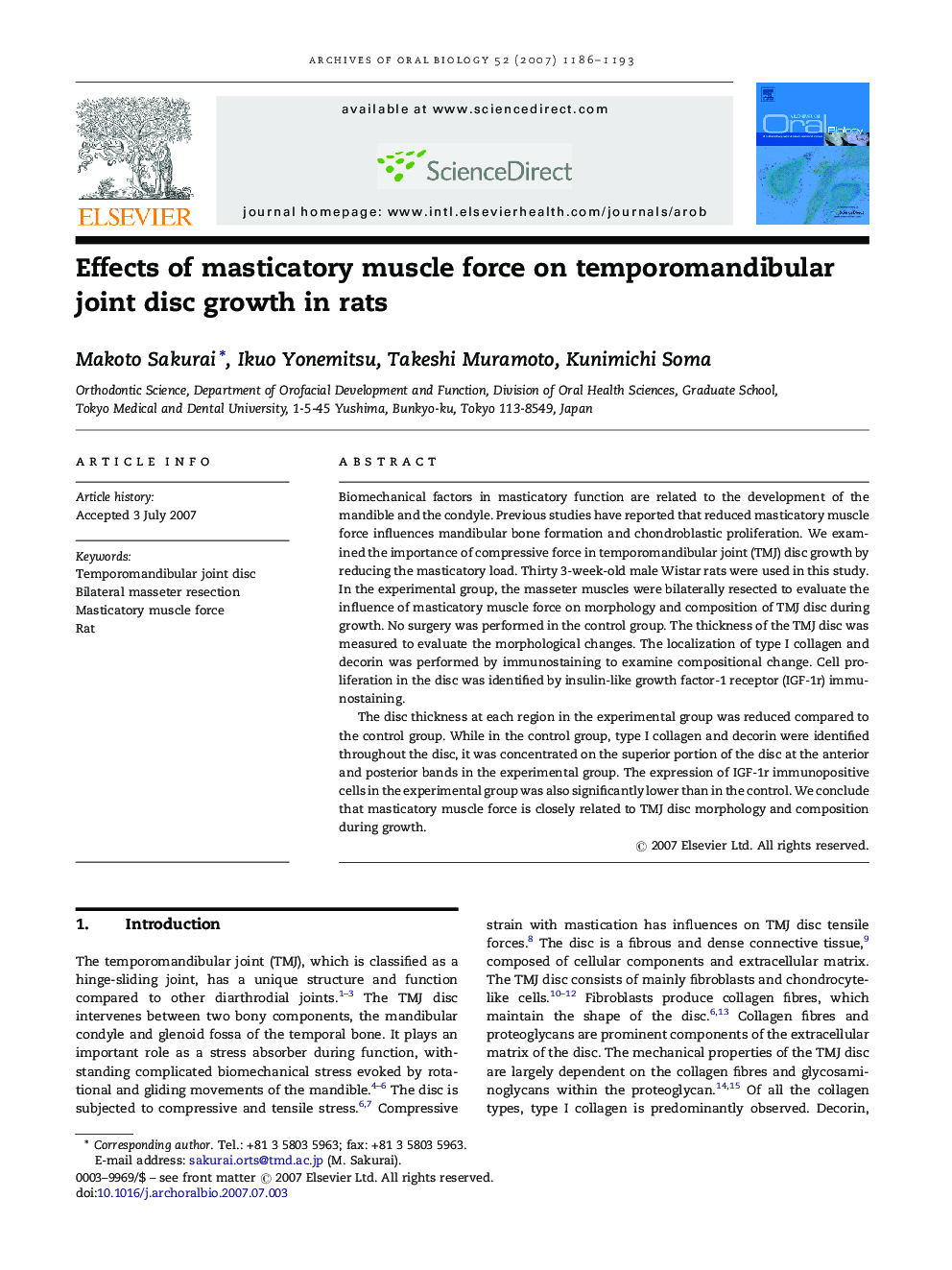| Article ID | Journal | Published Year | Pages | File Type |
|---|---|---|---|---|
| 3121843 | Archives of Oral Biology | 2007 | 8 Pages |
Biomechanical factors in masticatory function are related to the development of the mandible and the condyle. Previous studies have reported that reduced masticatory muscle force influences mandibular bone formation and chondroblastic proliferation. We examined the importance of compressive force in temporomandibular joint (TMJ) disc growth by reducing the masticatory load. Thirty 3-week-old male Wistar rats were used in this study. In the experimental group, the masseter muscles were bilaterally resected to evaluate the influence of masticatory muscle force on morphology and composition of TMJ disc during growth. No surgery was performed in the control group. The thickness of the TMJ disc was measured to evaluate the morphological changes. The localization of type I collagen and decorin was performed by immunostaining to examine compositional change. Cell proliferation in the disc was identified by insulin-like growth factor-1 receptor (IGF-1r) immunostaining.The disc thickness at each region in the experimental group was reduced compared to the control group. While in the control group, type I collagen and decorin were identified throughout the disc, it was concentrated on the superior portion of the disc at the anterior and posterior bands in the experimental group. The expression of IGF-1r immunopositive cells in the experimental group was also significantly lower than in the control. We conclude that masticatory muscle force is closely related to TMJ disc morphology and composition during growth.
